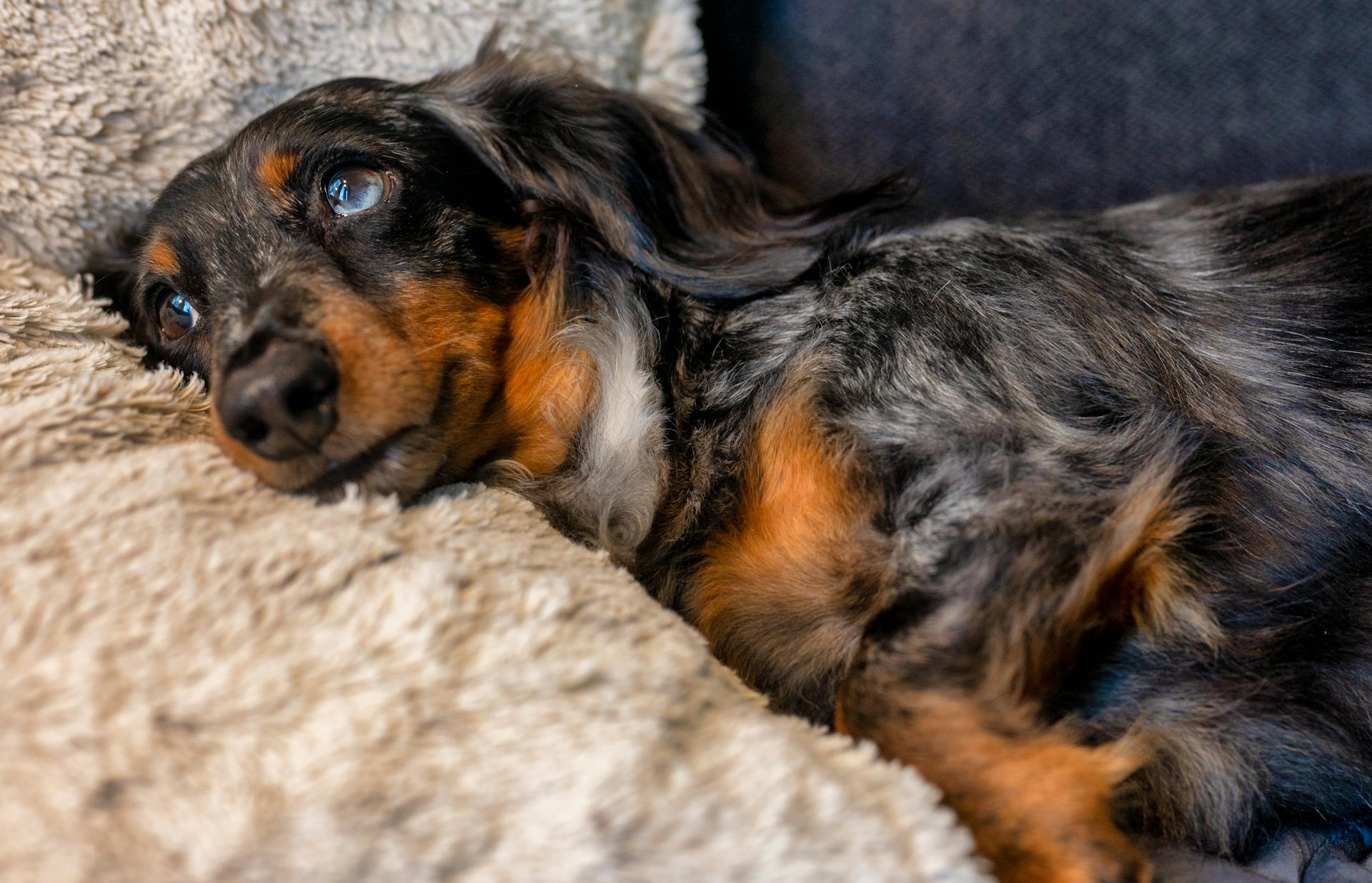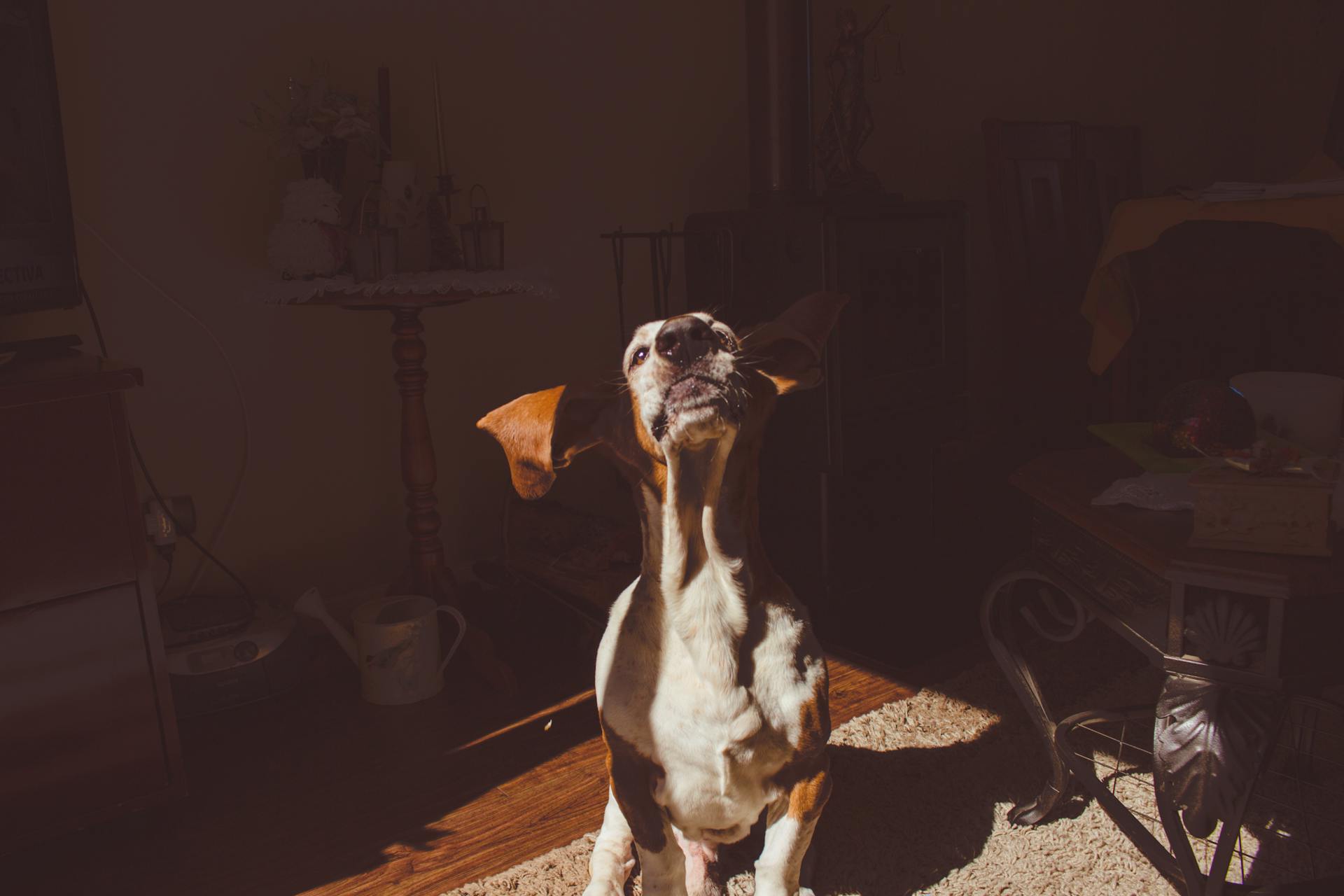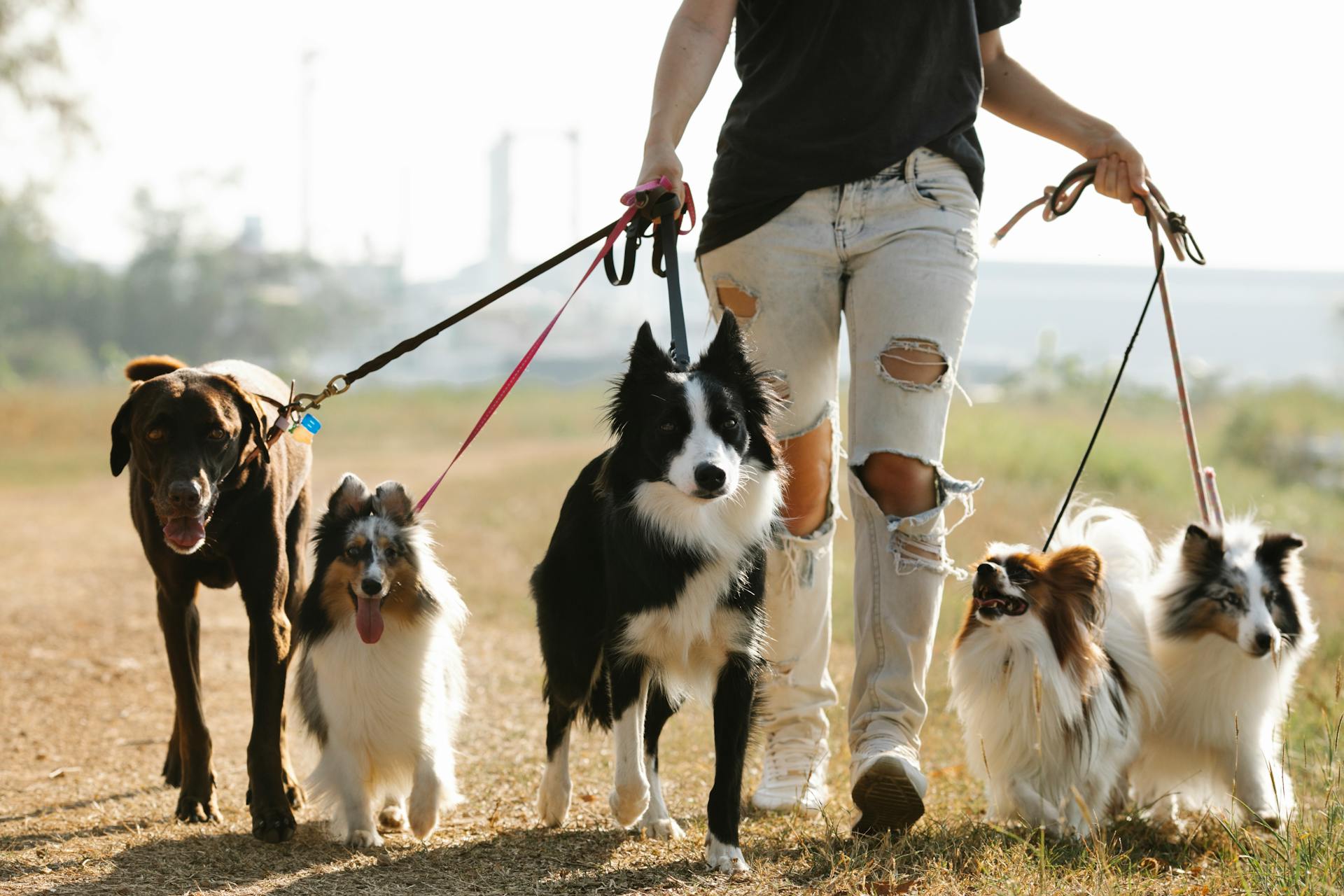
Having a dog with coarse hair can often be quite challenging in terms of grooming and keeping your pup looking soft and fluffy. Fortunately, there are ways to make the hair less coarse and easier to groom, giving your pup a beautiful, healthy coat.
The first step is to use a quality shampoo specifically formulated for dogs with coarse fur. If your pup's fur is especially thick or coarse, look for a vitamin-rich dog shampoo that helps soften and bring out some shine in the coat. Something with shea butter is an excellent moisturizer for the fur, helping to reduce course strands. Follow the shampoo instruction carefully and avoid overwashing as that can strip away too much of your pup's natural oils and make their fur even coarser.
Brushing your pup's fur is perhaps the most important step you can take to keep it soft and healthy. This doesn't have to involve hours of brushing every day – just take five minutes or so each day or every other day to give your dog's fur a thorough brushing with a high-quality brush designed specifically for their type of fur (where applicable). This will not only help reduce matting but also stimulate oil production in the follicles which keeps skin moist and hair softer overall. It may be helpful to consult an experienced groomer on the right type of brush for your particular breed or size/type of coat – they should be able to advise what works best for brushing out coarse hairs without causing damage or breakage.
Finally, make sure you're using quality conditioners in addition to shampoo when bathing your pup. These conditioners are specifically designed to help hydrate both skin and coat while softening even coarser strands of hair. They also reduce static electricity, making it easier to brush out those kinks! Make sure you use the recommended amount of conditioner for the size/coat type of your pup – too much can weigh down the fur and leave it looking dull instead of soft and fluffy – but with proper use this will help restore moisture balance, reduce itching from dryness, eliminate static electricity, untangle matting and generally add gloss, smoothness and softness back into their hair all at once!
Additional reading: Do Hypoallergenic Dogs Have Hair or Fur
What type of grooming products should I use to smooth out my dog's thick fur?
If your furry companion has particularly thick fur, it can be tricky to figure out which kind of grooming products will help keep their coat looking healthy and well-maintained. That’s why it’s important to choose carefully the grooming products that are right for your pup's fur type. Your loyal canine companion should have a great-looking coat in no time when you use the correct tools and techniques.
For starters, there are several types of dog brushes available that may be beneficial for dogs with thick fur. A standard bristle brush is good to keep on hand as it can detangle rough patches as well as remove surface dirt and dust effectively. An undercoat rake can also prove useful for dogs with heavy coats since it eliminates excess undercoat fur, leaving behind a softer look. If your pup's double coat is really long and dense, consider using a slicker brush for deeper cleaning action and plenty of volume reduction. No matter which type of brush you go with, brushing with long strokes against the grain will help to keep shedding to a minimum and make their fur appear smooth.
Apart from brushes, regular bathing is another necessary step when caring for a pup that has thick fur! Using plenty of lukewarm water along with an appropriate dog shampoo will help nourish their skin while also keeping odors away. When applying shampoo, remember to lather up lightly in order to avoid base damage such as areas where the natural oils have been stripped away. After they are done bathing, be sure to use conditioner intended specifically for dogs with thick coats in order to make them feel extra soft and smooth! This should result in all those difficult tangles dissipating nicely, leaving only beautiful strands behind.
By following these basic tips and using the right products for your pal’s fur type you can rest assured knowing your pup will have healthier looking fur than ever before!
If this caught your attention, see: Dog Types Long Hair
How can I make my dog's fur smooth and silky?
Ensuring your dog has a smooth and silky coat requires ongoing care and maintenance — both physically and nutritionally. It’s important to start with the basics, such as regular grooming, bathing, and brushing. These activities not only keep your pet clean, but also help prevent matting, which can lead to dryness, itching, infection, and more. Include high-quality pet-feeding from a reputable brand in your dog's diet - look for one that is specifically designed for your pup's fur coat type - as it will contain the essential nutrients needed to promote a healthy shine and softness.
A popular trend among show-dog owners is to add coats of conditioning oil over top of the fur after brushing. This keeps the hair lubricated and helps to enhance the softness and elasticity of any fur coat. Popular oils used amongst this crowd are rosemary oil or Jojoba oil which are known to be some of the better conditioning oils when applied topically. Just be sure not to use too much!
Finally, avoiding using harsh shampoos or any product with added fragrances or preservatives will help keep your pup’s fur looking its best as random irritants could lead to skin woes or an excessively dry or greasy appearance. You may want to try an all-natural shampoo that includes ingredients like oatmeal – this can provide hydration deep within the root follicles while promoting lustrous growth. And adding in some vinegar rinse solution can help balance out the pH levels even more so!
Broaden your view: Do Maltese Dogs Have Hair or Fur
What is the best way to detangle my dog's rough coat?
Maintaining your pup's coat is an important part of keeping them healthy and happy. Dogs with rough, tangled coats can be quite challenging to manage, but with the right tips and tricks you can easily work through their fur and make sure they look their best. Here are the best ways to detangle your dog's rough coat:
First off, the key to success is brushing regularly. Brushing at least once or twice a week is ideal, as this can help reduce tangles before they become extremely knotted. Make sure you use a comb that's specifically designed for pets with coarse fur - this will help to separate the strands of fur more easily. Make sure you start from the root and work your way up, slowly and gently brushing out any knots or tangles that you come across.
In addition to brushing regularly, it's important to use proper grooming products when it comes to detangling rough coats on dogs. Use moisturizing conditioners that are designed for dogs with long or thick coats to help get rid of any dryness or frizziness that can lead to tangled fur. A leave-in spray may also be helpful in preventing knots from forming in between brushing sessions.
Finally, using the right tools while detangling is imperative to a successful job. Professional metal combs work great on coarse coats - they should have closely-spaced teeth so they don't pull or tug too much on your pup's fur. If necessary, you may need de-matting solutions if your dog's coat has become excessively knotted - however, these products should only be used as a last-ditch effort as they're not gentle on fur and skin alike!
With these tips in mind you’ll have no trouble tackling even the toughest of tangles in your pet’s coat! Regular brushing combined with proper grooming products and tools will ensure both you and your pup stay happy when it comes time for coat care.
Expand your knowledge: Best Food for Gassy Dogs
How do I manage my dog's wiry fur?
Having a wiry-haired dog can be difficult to maintain, but it doesn't need to be. Regular grooming is essential for keeping your dog's fur manageable and healthy. It's important to use the right tools, such as pin brushes with spread-out pins and slicker brushes that create a mat-free coat. You should also make sure you deshed your dog regularly, brushing out any excess fur that might become matted before it builds up.
Another important step in dealing with wiry fur is proper nutrition. Your dog's diet needs to include proteins and essential fatty acids so their coat can stay resilient and fur healthy - some sources of these ingredients include fish oil, eggs and flaxseed oil. If a balanced diet isn't enough, then you may consider adding supplements to their food as an additional way of providing them with the necessary nutrients for smooth, beautiful fur.
If your pup has dry skin or dandruff issues, then make sure you use a hypoallergenic shampoo specifically for wiry fur breeds when washing them. Additionally, unless your dog must live inside at all times, outdoor playtime can help keep the coat clean due to dirt clumping together around oils secreted by the skin - this will create more volume in their hair too! Being mindful of how often you bathe them is important as over washing will strip away their natural oils making it harder for their hair strands to remain conditioned.
Managing a wiry-haired pup can be tricky but following these steps will ensure they look shiny and sleek year round! Taking the time to find the right tools and checking that they are being fed appropriately can go a long way - happy grooming!
On a similar theme: How to Get Hair Out of Dog's Eyeball?
What brushing technique should I use to make my dog's thick fur softer?
Dog owners know that having a pet can be a lot of fun, but it also requires diligence because otherwise, the pet’s fur can quickly get tangled and matted. If your dog has thick fur, you'll need to use the correct brushing technique to keep the fur from becoming uncomfortably matted and unpleasant to touch. To make grooming easier and to ensure your pup's coat looks plush and soft, here's what you should do.
First of all, invest in a proper brush for dogs with thick fur, preferentially one with metal pins on a rubberized grip so that you can maintain control while brushing. Start off by brushing your dog’s area around the collar first and slowly work in broader circles towards their head and tail. You can also add in short strokes of varying lengths while keeping the pressure light–try not to press too hard since this can cause unnecessary discomfort or discomfort to your pup. The goal is simply to free tangles up so they are easier to manage, rather than trying to brush them out completely all at once.
Once you’ve worked out the knots and tangles, switch to a bristle brush for that signature soft and shiny coat finish look for dogs with thick fur. Start off by brushing gently from head until legs as if combing downward from ear edge before combing upwards from base—this creates an even finish with minimal effort and better results all around. The underlying concept is that you want to ensure each stroke works through any trouble spots as well as provide a general smoothing effect overall. Doing this every day should eventually guarantee a smoother coat as time goes on!
You might like: Dog Hair Everywhere Pet Grooming
How can I make my dog's fur look and feel softer?
Regular grooming is essential for keeping your dog's fur soft, manageable, and healthy looking. Brushing helps remove built-up dirt, dead skin cells, excess oils, and more. A regular brushing routine can also help stimulate the production of natural oils that help maintain a healthy coat.
For optimum results, use the right grooming tools. A slicker brush or wire slicker brush are the best choices for removing excess fur and detangling mats or knots. A pin brush works well on long-haired dogs to evenly distribute oils along the length of their hair shafts. For added softness, you can use a bristle brush after using a slicker or pin brush. Be sure to only use products made specifically for dogs – never human shampoo because it can cause skin irritation in your dog's sensitive skin.
To keep your pup’s fur feeling silky soft, include ingredients such as olive oil or coconut oil into their diet–about one teaspoon per meal should do the trick! Also make sure they always have plenty of fresh water to drink so they don't dehydrate their coats. If the weather outside is cold and dry, you may want to provide them with a moisturizing mist during their brushing sessions – look for one with ingredients like jojoba oil or sunflower seed oil for an extra dose of protection against dry skin and brittleness in their coats. As an additional bonus, consider giving your pup weekly spa baths using an oatmeal shampoo to help soothe any irritation on the skin and leave their fur feeling insanely soft once again!
Additional reading: Soften Dry Dog Food
Sources
- https://play.typeracer.com/
- https://www.how-to-type.com/
- https://wagwalking.com/condition/brittle-coat
- https://dogdorable.com/how-to-make-dog-hair-soft/
- https://www.poodleforum.com/threads/course-hair.2047/
- https://dog-faq.com/how-to-soften-coarse-dog-hair/
- https://hairstylecamp.com/make-coarse-hair-softer/
- https://www.merriam-webster.com/dictionary/type
- https://pets.thenest.com/add-dog-food-soft-coat-6993.html
- https://www.bubblespetspa.com/blog/shiny-dog-hair-tips/
- https://typespeedtest.com/
- https://news.orvis.com/dogs/a-guide-to-dog-coat-types
- https://www.emedihealth.com/skin-beauty/hair-scalp/soften-coarse-hair
- https://www.typing.com/
- https://bullymax.com/blog/dog-skin-coat/
Featured Images: pexels.com


